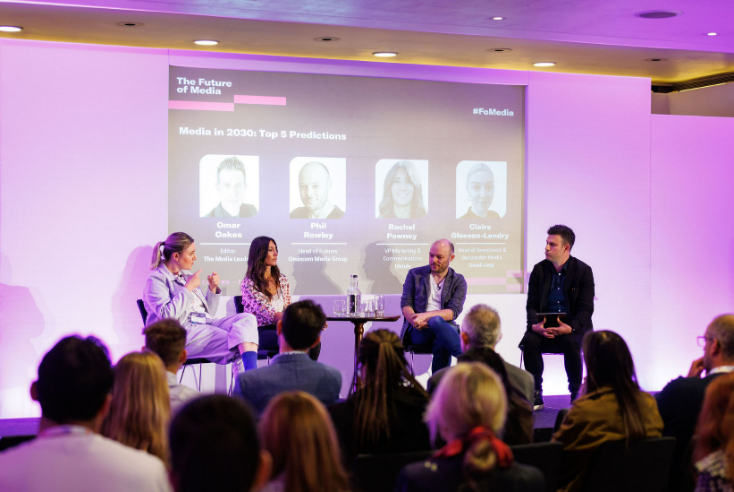‘Older, more connected, sustainable’: What will media look like in 2030?

The Future of Media
Predicting the future of an ever-changing industry like media marketing is a daunting task, yet that’s exactly what a panel of experts and innovators were asked to do at Mediatel’s Future of Media event.
Marketing for an older generation
The number of people aged 85 and over is set to almost double in the next 20 years.
A fact to consider as Phil Rowley, head of futures at Omnicom Media Group, explained: “The demographic disruption is something no one is talking about. Essentially, it’s a shake-up of the make-up of the global constituent parts of society. We’re going to see more grandparents than grandchildren in the world — a burgeoning cohort of older people — and we’ll start seeing depopulation as birth rates are below replacement level.”
But what does that mean for advertisers and media in business?
Rowley said: “We’ve all been obsessed for years with getting young people into our agencies to tell the older generation about TikTok. Unfortunately, that’s not going to cut it anymore. We’re needing a better representation of older people within our industry because the demographic breakdown of our country — like all western nations — will be far more slanted towards an ageing population.”
Massive growth for connected devices
Another prediction was around hyperconnectivity and the sheer number of devices that people will own.
Research by Frost and Sullivan has found that there will be 200 billion connected devices in the world in 2030. To put that into context, in 2020 there were 30 billion.
“We’re going to see a huge growth in devices very quickly,” commented Rachel Powney, VP marketing and communications at video and connected TV adtech company, Unruly.
“This is going to be made possible by the convergence of 5G and Wi-Fi 6, which will make connectivity much easier with faster broadband speeds, better customer experiences, and long-term cost efficiencies.
“My hope is that is that by 2030 things will be frictionless with products becoming services, and everything will be purchasable. This will open up a whole new opportunity for brands. We’re seeing already how TikTok is evolving into the ecommerce space.”
Sustainability key for the industry
Post-pandemic, attention has pivoted back to the environment and sustainability is no longer just a buzzword.
Claire Gleeson-Landry, head of investment and sustainable media at online advertising company GoodLoop, said: “There’s going to be more jobs within the field. My job has already changed from working with agencies on regular video campaigns to heading up a whole division around sustainability.
“Certainly, from a consumer perspective, this is a big issue no matter what generation you’re from. In fact, Gen Zs are incredible at influencing not just their parents, but their grandparents to buy more sustainably. Brands that do well in this space will benefit — people are six times more likely to protect brands that are doing good things for the planet.”
She added: “That said, I see sustainability being at the core for media planning but also for activation and delivery.”
Panel speakers: Phil Rowley, head of futures, Omnicom Media Group; Rachel Powney, VP marketing & communications, Unruly; Claire Gleeson-Landry, head of investment & Sustainable Media, Good-Loop. Chair: Omar Oakes, editor, The Media Leader.



